Dados do Trabalho
Título
ONCOTHERAD IMMUNOTHERAPY AND PLATELET RICH PLASMA IN THE BLADDER CANCER TREATMENT: ASSESSMENT OF THE CYTOTOXIC RESPONSE AND CANCER PROGRESSION BIOMARKERS
Resumo
Background
The type I and II interferon (IFN) response induced by the stimulator of interferon genes (STING) is related to the activation of tank-binding kinase 1 (TBK1) through Toll-like receptors (TLR). IFNs promote M1 macrophage polarization and CD8+T cells expansion and activation, increasing immune surveillance. Recently, CX3C chemokine receptor 1 (CX3CR1) was discovered to be a T cell differentiation marker. On the other hand, regulatory T cells (Tregs), identified by FOXP3 marker, allow immune tolerance. We evaluated the effects of OncoTherad nanoimmunotherapy associated with Platelet Rich Plasma (PRP) on cytotoxic activity (TBK1, CX3CR1, IL1-β), Tregs FOXP3+, and cancer progression biomarkers (VEGF and IGF-1) in a non-muscle invasive bladder cancer (NMIBC) mouse model.
Methods
Thirty-five C57BL/6J mice were divided into 5 groups: Control; Cancer (N-ethyl-N-nitrosourea carcinogen, 50 mg/ml); PRP (0.1 ml); OncoTherad (20 mg/ml); and OncoTherad+PRP (10 mg/ml). The intravesical doses (0.1 ml) were given once a week for 6 weeks.
Results
TBK1 immunoreactivity and the immunoreaction intensity were increased (p<0.01) by OncoTherad and OncoTherad+PRP compared to the Cancer group. Our previous studies described stimulation of TLR4-mediated IFNγ production by OncoTherad. IFNγ is central to CD8+T cell activation which is related to the increase (p<0.01) in the number of CX3CR1+ cells and the immunostaining intensity after OncoTherad treatment. Both total immunoreactivity and IL1-β intensity decreased (p<0.01) in the Cancer group which indicates an immunosuppressed environment. However, the OncoTherad+PRP group showed a higher (p<0.01) percentage of IL1-β positive cells and a stronger immunoreaction compared to the Cancer. The increase of IL-1β might be related to the immunogenic cell death as this interleukin is a key pro-inflammatory mediator and crucial during pyroptosis (inflammatory cell death). OncoTherad and OncoTherad+PRP decreased (p<0.01) the percentage of FOXP3+ cells and reduced the reaction intensity compared to the Cancer and PRP groups. Furthermore, PRP alone or with OncoTherad did not increase (p>0.05) VEGF and IGF-1 growth factors.
Conclusions
OncoTherad alone or with PRP modulated the NMIBC microenvironment to a cytotoxic profile correlated with the IL1-β increase by stimulating immune pathways for IFNγ production and consequent CD8+T cell activation and Tregs reduction. In addition, PRP did not trigger carcinogenic effects in this NMIBC model.
Palavras Chave
TBK1; CX3CR1; T cells; Tregs; Immunotherapy
Área
Câncer de bexiga
Instituições
Laboratory of Urogenital Carcinogenesis and Immunotherapy (LCURGIM), Department of Structural and Functional Biology, Institute of Biology - University of Campinas (UNICAMP) - São Paulo - Brasil, Nanomedicine Research Unit (Nanomed), Federal University of ABC (UFABC) - São Paulo - Brasil
Autores
BIANCA RIBEIRO DE SOUZA , IANNY BRUM REIS, GABRIELA CARDOSO DE ARRUDA CAMARGO, GABRIELA OLIVEIRA, NELSON DURÁN, WAGNER JOSÉ FÁVARO


 Português
Português English
English